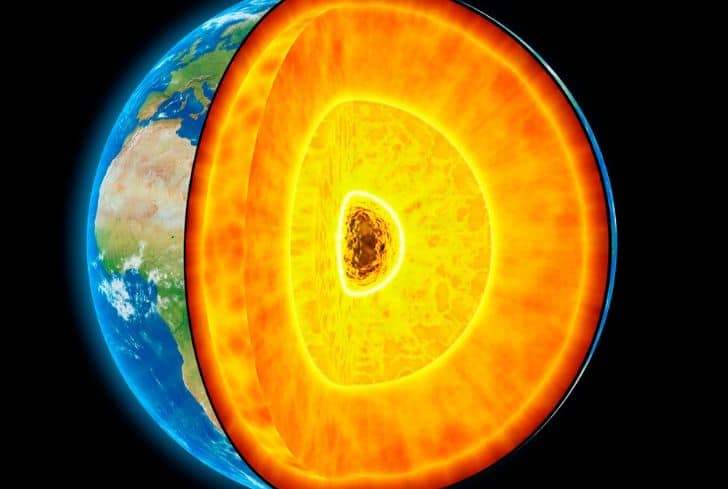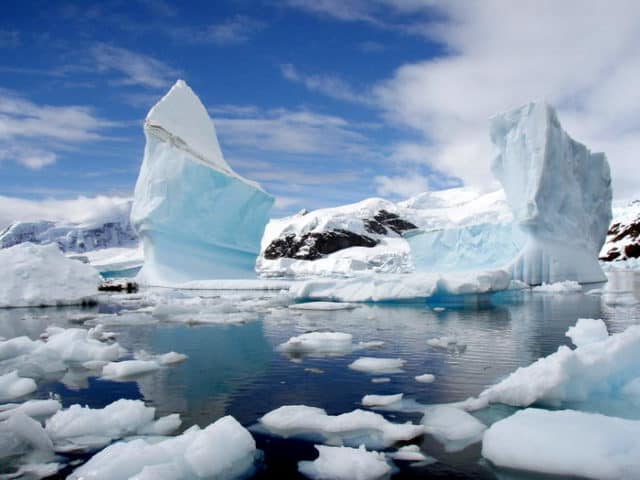What are Geological Faults? Causes and Types of Geological Faults

In geology, a fault is a discontinuity that is formed by fracture in the surface rocks of the Earth (up to 200 km deep) when tectonic forces exceed the resistance of the rocks. In other words, a fault is a crack in the Earth’s crust. The rupture zone has a generally well defined surface called the fault plane and its formation is accompanied by a slide of rocks tangential to this plane.
Causing dislocation motion can have different directions: vertical, horizontal or a combination of both. In mountainous masses who have risen by fault, movement displacement can be thousands of meters and shows the cumulative effect, over long periods, small and imperceptible movements, rather than a single large uprising. However, when activity in failure is sudden and abrupt, it can produce a large earthquake, and even a rupture of the earth’s surface, creating a topographic form called fault scarp.
According to Wikipedia,
“In geology, a fault is a planar fracture or discontinuity in a volume of rock, across which there has been significant displacement as a result of rock mass movement. Large faults within the Earth’s crust result from the action of plate tectonic forces, with the largest forming the boundaries between the plates, such as subduction zones or transform faults.“
Causes of Geological Faults
Geological faults happen when stress occurs and determines the fault’s type after the event. There are three main categories of stress:
- Compression stress
Occurs at convergent plate boundaries. The plates move and crash toward each other. This is what like when two cars crash into each other.
- Tension stress
Occurs at divergent plate boundaries. The plates are drifting away from each other.
- Shear stress
Occurs majorly at transform boundaries. The plates slide past each other horizontally in opposite directions.
Features of Geological Faults
The following features allow us to describe faults:
- Direction
The angle between a horizontal lines contained in the fault plane with the north-south axis.
- Dip
The angle between the fault plane with the horizontal.
- Jump fails
Distance between a given one of the blocks (e.g. one surface of a layer) And the corresponding point in the other, taken along the fault plane.
- Escarp
Distance between surfaces of the two lips, taken vertically.
- Mirror fault
The flat surface although decline, which occurs along the fault scarp
- Triangular facets
Mirrors showing the cutting failures occurred in a mountainous row when the failure occurs perpendicular to the direction of this mountainous row. Both the sunken part as the mirror itself fault have triangular appearance, hence the name.
Active and Inactive Faults
The fault is active when deformed Quaternary sediments. In other words, when there are evidence of movement over the past 1.8 million years. Some active faults often are associated with earthquakes, demonstrating that they continue to operate. There could be sudden shaped jumps leading to earthquakes and the cause is the collision of two faults when the earthquakes happen to collide followed by periods of inactivity. The largest earthquakes have been caused by jumps from 8 to 12 m. The slip can also occur slowly and continuously, perceptible only with instruments such as GPS stations after several years of observations.
The first type are seismic faults while the latter are aseismic or crawlers. However, when considering large time intervals on the order of thousands of years, both moving at average speeds of a few millimeters to a few centimeters per year.
An example is the San Andreas Fault in southern and central California in the US, which has generated earthquakes in San Francisco (M = 8.2 on the Richter scale) in 1905, Los Angeles (M = 6.5) in 1993 and recently Hector Mine (M = 7) in 1999 and San Luis Obispo (M = 6.2) in 2004.
There are also inactive old faults created in past geological area and survive as fossils structures to this day. These do not represent any danger to nearby towns.
Types of Geological Faults According to Their Movement
The faults are classified into three types based on the efforts that originate and relative movements of the blocks:
- Reverse fault
This type of failure is generated by compression. The movement is usually horizontal and the fault plane typically has a 30 degree angle to the horizontal direction. The ceiling block is located on the footwall.
- Normal fault
These faults are generated by traction. The motion is predominantly vertical to the plane of failure, which typically has a 60 degree angle to the horizontal direction. The block that slides down is called block roof while rising is called block floor.
- Strike-slip fault
In this type vertical jump component is negligible and the predominant movement is horizontal. There are two types – dextral and sinistral. These two types of strike-slip faults are distinguished by the researchers. Placing the observer at any of the blocks and where shifts facing the other, dextral are those where the relative movement of the blocks is clockwise, while with the sinistral, the opposite occurs.
They should not be confused with transform faults, which are associated with the concept transforming edge of the theory of plate tectonics, or with transverse faults, which are those that allow accommodation of differential movements of blocks along a fault plane.
- Oblique fault
This movement has a vertical component and a horizontal component.
- Transform fault
Transform fault or transforming edge is the side edge of a tectonic plate shift relative to each other. Their presence is remarkable thanks to the discontinuities of the land. This type of fault connects the mid-ocean ridges while others simply accommodate movement between continental plates horizontally. The most important transform fault is the San Andreas Fault in California, USA.
The fault or transforming edge occurs on passive edges of a tectonic plate and is characterized as a failure of horizontal scrolling, where the plates move next to each other due to the expansion of the ocean floor, without producing or destroying lithosphere.
These faults would connect global active belts in a continuous network which divides the outer surface of the Earth in several rigid plates. Therefore, the Earth consists of individual plates and along transform faults where the relative movement is possible between them.
Most transform faults join two segments of a mid-ocean ridge. In addition, through the transform faults, oceanic crust is created at the ridges and it can be transported to a zone of destruction, the trenches.
Types of boundaries
The plates can collide away or slide to each other, depending on the type of movement. There are three different types of plate boundaries:
- Converging boundaries
A convergent boundary has an opposite movement to the divergent boundary. The tectonic plates collide so volcanic activity associated leads and creating relief.
- Diverging boundaries
A divergent boundary has an opposite movement to the converging boundary. In this case, the tectonic plates are separated so they cause the rise of material from the mantle, creating new soil.
- Transform
Two plates sliding in opposite direction by one another are called transform boundaries.
World’s Well-known Geological Faults
There are many geological faults in the world, created after natural changes and events. Two of the most famous are:
- The Altyn Tagh fault
It is a fault that was created and continued to exist for about 40 million years ago during which the Indian subcontinent has been pushing northward, colliding with the Eurasian landmass. It is more than 2500 km large, including the Kansu fault that is united in its eastern end. It is located 1200 km north of the Mount Everest, in the Chinese region of Xinjiang. This fault is probably the biggest active fracture in the world.
This area is very active in violent earthquakes, which is easily noticeable when we realize that the Indian continent has moved 2000 km on Eurasia from the beginning of the collision. This fault caused the Sichuan earthquake that left 60,000 dead.
- The San Andreas Fault
It is located between the North American Plate and the Pacific Plate. This system has a length of 287 km and about a thousand cuts through California, United States, and Baja California in Mexico. It is famous for producing large and devastating earthquakes.






